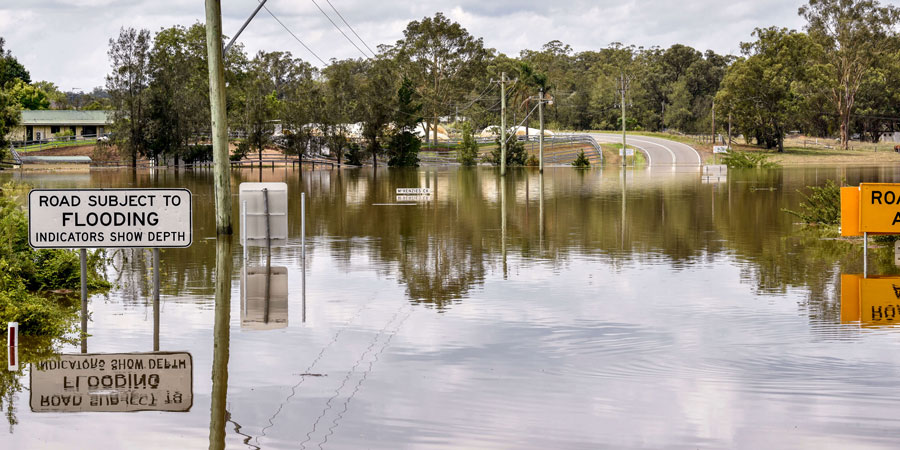On 28 February, the world’s most prominent and respected scientific body, the Intergovernmental Panel on Climate Change (IPCC), released the second contribution to the Sixth Assessment Report detailing at a global and regional scale the current impacts of climate change, projected impacts, implications for communities and ecosystems, as well as gaps and opportunities for adaptation.
At the same time, south eastern Australia experienced a severe weather event with heavy rainfall causing a range of impacts including major flooding across many regions, prompting emergency flood evacuations in some of the affected areas.
East Coast Lows (ECLs) are extreme storms that can cause significant flood and wind damage along the NSW coast. An ECL developed offshore as part of this weather event, causing parts of NSW to experience even more wet weather. With climate change on the minds of many of us, it’s important to consider what role climate change has in driving the frequency and intensity of these events, noting that causal links to any one climate event and its impacts are tricky and local impacts can and will vary.
The latest IPCC report for the Australasia region confirms that we have already experienced the impacts of climate change and will continue to do so. As stated in the report:
“Extreme rainfall is projected to become more intense (high confidence) but the magnitude of change is uncertain.” [11-45]
Moreover, the report states:
“modelling studies project increases in flood magnitudes in northern and eastern Australia (high confidence).” [11-45]
In addition, the report reveals that climate risks are projected to increase for compounding impacts on settlements and infrastructure due to bushfires, floods, droughts, heatwaves, storms and sea-level rise. However, it is important to note that in general, projections for rainfall, thunderstorms, hail, and lightning have large uncertainties.
In collaboration with key partners including the University of New South Wales, our expert climate researchers have bolstered this information through the development of climate projections for our region. Through the world-class NSW and Australian Regional Climate Modelling (NARCliM) project, local level decision-makers are able to access NARCliM data to understand the impacts of flooding in the context of a changing climate. Using the latest available global and regional climate models and international best practice, our researchers deliver regional climate projections critical to helping us understand natural hazards and the risks they present to our communities both now and into the future. This is crucial for enabling us to better adapt to storms and floods in NSW.
- ECLs are intense low-pressure systems that occur off the east coast of Australia.
- ECLs can form at any time of the year, but most typically during the winter months, and significant ECLs occur on average about 10 times each year. These storms can bring damaging winds and surf and heavy rainfall. They can cause coastal erosion and flooding.
- While they can be costly storms, they are also important for water security bringing the heavy soaking rainfall that fills dams along the coast and the Tablelands.
- Modelling studies project increases in flood magnitudes in eastern and northern Australia (the situation is more complex for southern Australia).
- Other impacts of climate change, such as sea level rise, will make coastal storms, floods and inundation even more damaging, as erosion and flooding will occur further up the shoreline.
- Climate change may change the pattern of natural climate processes such as the El Niño and La Niña.
- The recent and ongoing flooding across New South Wales is consistent with both the La Niña weather pattern and the increased climate extremes as a result of climate change
Want to learn more about how climate change is projected to impact your region? Through the Regional Climate Change Snapshots or AdaptNSW interactive map you can see the projected changes for the near (2020–30) and far future (2060–79). You can also download these data and access other NARCliM projections from the NSW Climate Data Portal.



